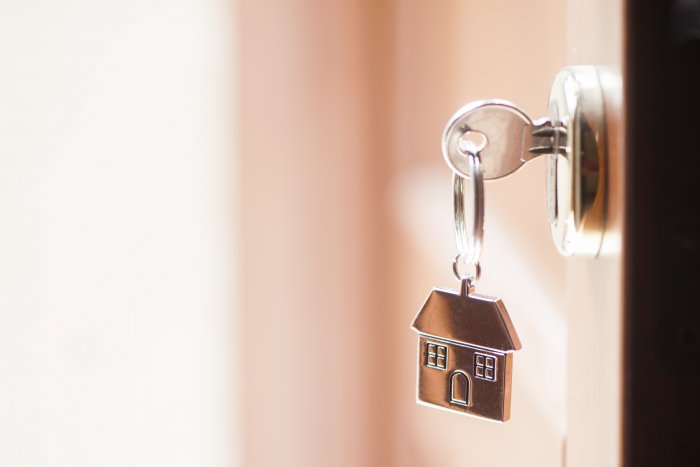Smartphones vs. digital cameras

When the camera made its appearance on the smartphone, it pretty much paled in comparison to the power of the digital compact camera. The quality was lousy, the images grainy and very small. Anything that moved faster than a rock came out blurry and out of focus. Nowadays, however, the technology on new smartphones has leapt forward enormously with better quality lenses, shooting modes, zoom functions and even image enhancement built right in. Is this the end of the compact camera era?
Hungary’s mobile phone market is undeniably a gigantic one. According to marketresearch.com, handset sales in the country are expected to grow 6% to a value of $383 million in 2016 as the mobile subscriber penetration rate reaches 120%. Smartphone technology, too, has been a real success in Hungary. The Budapest Business Journal asked Arnoud Vezin, leader of the marketing department of Gameloft, a mobile games company that has an affiliate in Budapest, how many Hungarian users have smartphones and his answer was quite surprising: according to his data, about 2 million. “That’s why our own market of mobile games does pretty well in this country,” he adds.
How nice of you!
With the advent of smartphones, the practical use of cameras – which have already become an almost obligatory addition to plain mobile phones as well – has also evolved considerably. One major advantage of having your camera as part of your smartphone is that you can snap a photo and upload it straight away to social media sites like Facebook, Twitter and Flickr, as well as email them to anyone anywhere in the world in an instant. The Hungarian marketing management of Sony acknowledges this. “The purpose is completely different,” Dávid Jécsi, the manager of digital image processing at Sony, told the BBJ. “The smart phone is always with you, and you can use different applications to process your intimate photos, which then can be instantly shared on social networking sites. Pictures taken in smart phones are an integral part of everyday life, but we all see the phone and digital camera photographs with a difference,” Jécsi explained.
It’s true that sharing pictures has never been easier than with smartphones. Most now incorporate Bluetooth technology, so it’s very simple to send your images through a wireless connection to another phone, computer, or even a TV set in the same room.
Stand-alone cameras need to have their photos transferred to a computer before this can happen, which can take some time if you have snapped hundreds of photos!
As for quality, smartphone cameras have evolved technically as well, and there are even phones with semi-professional cameras, like the Nokia 808’s PureView, which can capture photos at up to 41 Megapixels (a measure of resolution), which is an impressive number compared to other mobile cameras of between 8 and 10 MP at best. Still, according to Péter Nagy, a professional photographer, and owner of a Nokia 808 PureView, his phone’s camera cannot match those of his professional cameras for quality.
“In all honesty, because of the size of the camera and some other technical issues, those 41 MPs are not as bombastic as Nokia would like you to believe; still, the image quality is very impressive for a mobile phone, if still not reaching the quality of a good compact camera.”
So smartphones camera technology has just got smarter, but let’s not forget the simple fact that buying only one device is cheaper than buying a separate camera, and Hungarians are very price sensitive.
Cameras: they still “have it”
Whilst new smartphone technologies can make it very appealing to opt for the “all-in-one” approach to photography, there are a few good points to note about the humble point-and-shoot digital cameras.
As with most things electronic these days, digital cameras are getting smaller, sleeker and sexier all the time. So although it does mean taking two pieces of equipment when you next head out, they are nowhere near as bulky as they were just a few years ago.
As it is designed for a single purpose – taking pictures – the overall “photography package” you get is of a higher standard: you will get a better quality image with great colors and sharp focus thanks to its image sensor, which is generally larger than those found in smartphones. They tend to have a wider array of features and functions too, including modes for nighttime, fast-moving subjects, sports, nature, and more.
True quality
The lens is very important in a camera, and the lenses in cameras are generally way better than those found in smartphones. They also have the ability to physically zoom the lens out so you can shoot something at a distance. Smartphones use what’s known as “digital zoom”, which basically means it makes the image larger but the quality gets worse as it does so.
Sony’s Jécsi also thinks that cameras still have major advantages over smartphones cameras in some everyday aspect as well. “For capturing holiday moments, hiking, family events, people still prefer to use a digital camera. Thanks to the professional optical zoom we can get closer to the events without sacrificing image resolution. And thanks to the larger sensor we can capture high quality pictures in low light conditions that aren’t possible with smartphones. Also a number of manual control options are available and the more serious digital machines even have interchangeable lenses.”
Jécsi has a point: smartphones still cannot produce decent images while in poor lighting conditions, not a problem for digital cameras at all since they use a proper flash.
Regarding the editing of pictures, Instagram on mobile phones is all well and good, but if you really want creative control over your images, a dedicated camera will let you play around with the aperture, shutter speed and ISO (light sensitivity) settings so you can select what to focus on, blur out parts of the image, freeze fast action shots and more. This helps you learn more about how photography actually works and is a great learning tool if you want to progress in it rather than just take snapshots.
Resolution is generally higher in digital cameras, which is a whole article in itself that I will not get into today. In a nutshell, a higher resolution means that you can print out your photos in larger sizes and you have the ability to crop into an image to focus on a particular subject in the shot and still get a great looking photo without it looking all blocky.
“The problem is choice.” (Neo in Matrix)
So what is the answer to the big question, “What should I buy?” Well, that all depends on you. If you want to take good-quality snapshots of your life and share them with your friends over the Internet, then the smartphone and camera combo is probably for you.
If, however, you want a little extra from your images and are more interested in the actual photography side, then a separate digital camera would suit you better. That’s why the market is still quite strong in Hungary: compact cameras have evolved from mid-range quality to a semi- or near-professional level, and offer a good alternative to those who cannot afford an fully professional camera but still want good quality pictures. Things are changing so rapidly these days that it is probably just a matter of time before the smartphone can match the digital camera in all its features. But until then, the actual camera is still alive and kicking.
Jécsi’s final comment perfectly sums up the current difference between smartphones cameras and stand alone compact machines: “While the smartphone is a friend, which is always with you for the unexpected events of everyday, still, if you want to capture and share the most important moments of your life, you may consider having a good quality digital camera as well.”
Herpai Gergely (BadSector)
SUPPORT THE BUDAPEST BUSINESS JOURNAL
Producing journalism that is worthy of the name is a costly business. For 27 years, the publishers, editors and reporters of the Budapest Business Journal have striven to bring you business news that works, information that you can trust, that is factual, accurate and presented without fear or favor.
Newspaper organizations across the globe have struggled to find a business model that allows them to continue to excel, without compromising their ability to perform. Most recently, some have experimented with the idea of involving their most important stakeholders, their readers.
We would like to offer that same opportunity to our readers. We would like to invite you to help us deliver the quality business journalism you require. Hit our Support the BBJ button and you can choose the how much and how often you send us your contributions.





.jpg)

